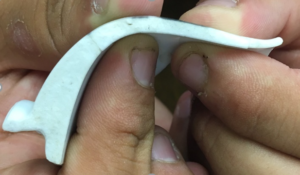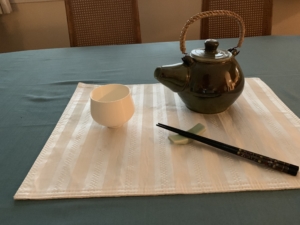My name is Kylie Dillinger, and I’m a senior at the University of Denver majoring in Anthropology and minoring in Emergent Digital Practices.
I attended an IFR field school in 2018 at the former Japanese Internment Camp site (Amache) in Granada, Colorado. I chose this field school itself partially due to it being close to where I go to school, but mostly because it’s directed by my academic advisor, Dr. Bonnie Clark. I enjoyed her classes and thrived under her teaching style, and I knew that she would only keep encouraging me to improve and be better while at her field school.
Overall, my time at field school was something I’m never going to forget. I’d never had any exposure to the WWII Japanese Internment camps before, and only barely heard through American History classes in high school that there had been any persecution or segregation of Japanese Americans during that time. Going from that lack of overall knowledge to standing right in the foundations where a former barracks stood and seeing the landscape of the site around me was a very humbling experience.
Some of the things I got to do while I was at field school were running the Amache Facebook page and creating daily/weekly content, and 3D scanning pottery sherds to a ceramic teacup that were found. 3D scanning artifacts is something I love doing, because with that digital data you can 3D print another copy of the artifact in plastic, or you can try to digitally rebuild the artifact and have an estimate for what it could look like if it was whole. That 3D reconstruction was exactly what I did.

This is a side view photo of 3 out of the 4 pottery sherds found that I scanned. In this, it’s clear to see that there is a perfect line from base to rim, outlining the shape of the object and offering the most details I could ask for in terms of trying to rebuild the artifact digitally and 3D print a replica.
So that’s exactly what I did.
“… we weren’t just working with artifacts and faceless, long-dead owners – it was with real people who were still alive today to see what was being done.”
Thanks to Bonnie and her support for me wanting to 3D scan and work on artifact reconstruction, I was able to reconstruct the teacup to size based on the sherds collected. Not only does the Amache museum now have this reconstruction in their museum, but so does every former internee or internee descendant that volunteered their time to work at the Amache site and assist us students during field school. Getting to work personally with former internees that could show you exactly where they used to live in the camp, or talking with internee descendants about their families and what they had heard from them, was another aspect that grounded me in the reminder that we weren’t just working with artifacts and faceless, long-dead owners – it was with real people who were still alive today to see what was being done. Being able to present them with a reconstructed piece of Amache was one of the most emotionally fulfilling parts of the work I did.

For me, there was no greater experience than hearing the stories from former internees and internee descendants, and being able to give them a replicated piece of history to take back home with them at the end of the field school. Every archaeologist wishes that they could talk with people from the time period their site is set in; being able to actually do that was the most meaningful part of the entire field school for me. One of the internee descendants I worked with personally, Carlene Tanigoshi Tinker, sent the following photo after the field school to show me and Dr. Clark what she has done with the replica artifact.

I can’t begin to describe the ways that the Amache field school changed my perspectives on archaeological work and on historical archaeology. It was an overwhelmingly positive experience, and included so many opportunities for public engagement and community engagement.
Be sure to check out our current IFR Scholarships and apply today!

